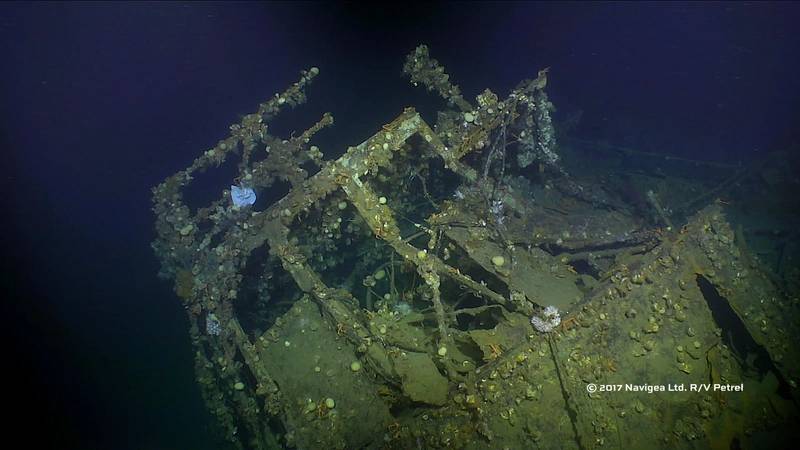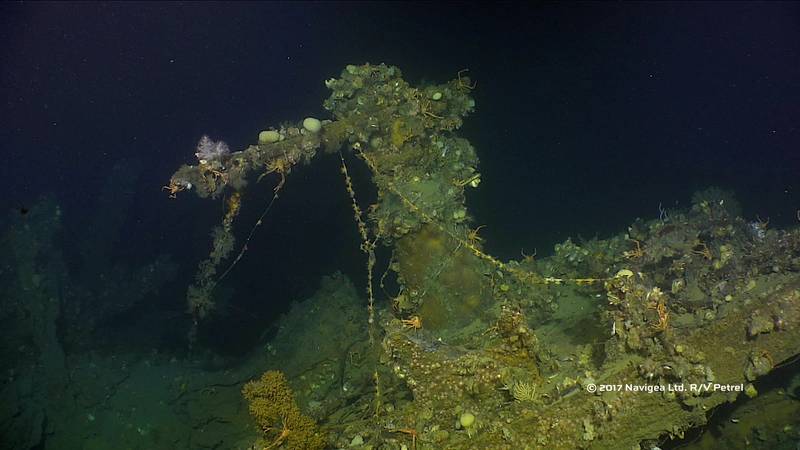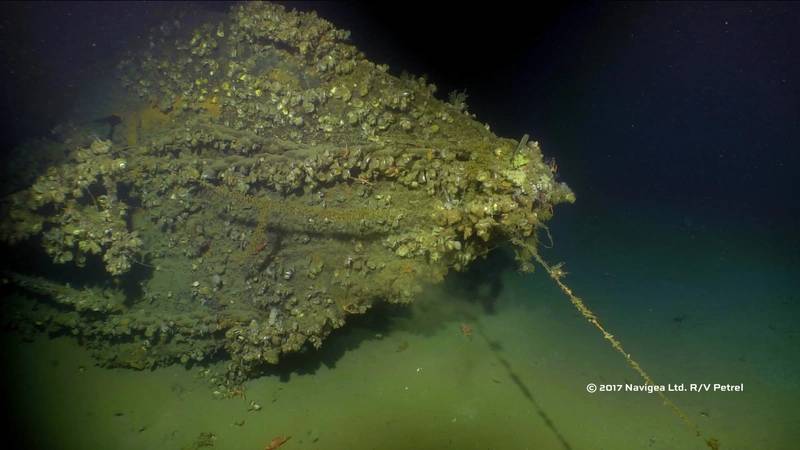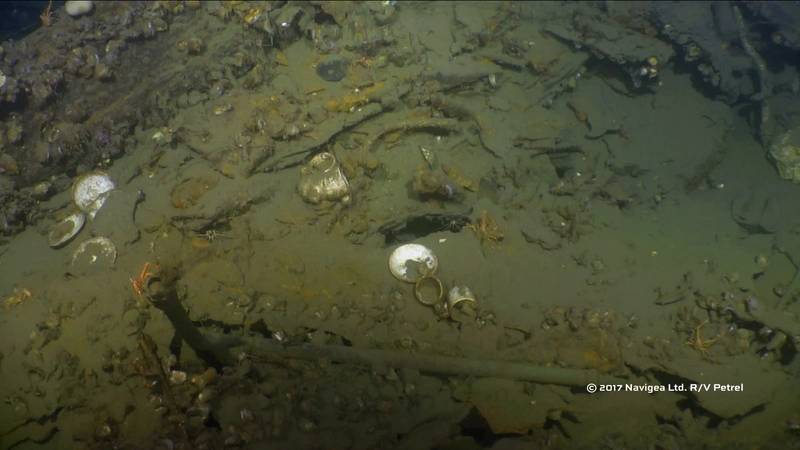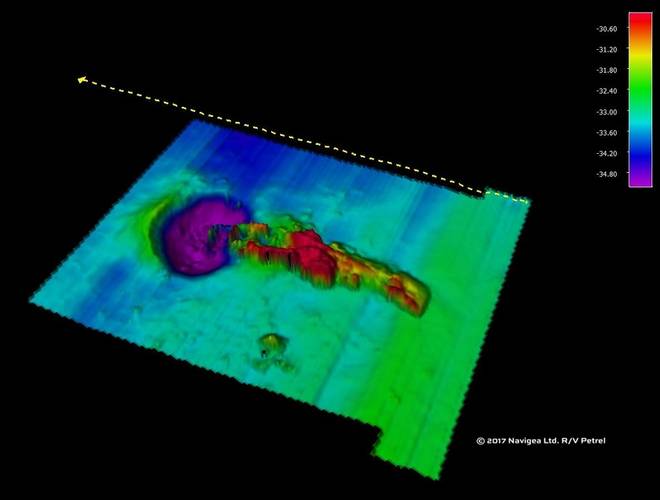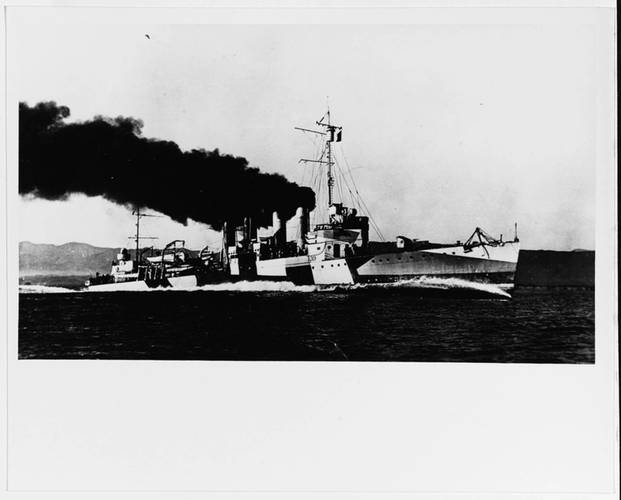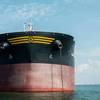The U.S. Navy warship that famously fired the first American shot in World War II has been found resting on the seabed in Ormoc Bay near Ponson Island in the Philippines.
The historic vessel USS Ward was discovered and documented by Microsoft co-founder and philanthropist Paul G. Allen's expedition crew aboard Research Vessel (R/V) Petrel, who has now released video images just prior to the anniversary of the December 7, 1941 attack on Pearl Harbor.
At 6:45 a.m. on Sunday, December 7, 1941, the Wickes-class destroyer fired America’s first shot in World War II when its crew sighted and sank a Japanese midget submarine just outside of Pearl Harbor, Hawaii about an hour before the air attack began.
Three years later to the day, on December 7, 1944, the vessel (since converted to a high-speed transport ship and redesignated APD-16) was lost after coming under attack by several kamikazes while patrolling Ormoc Bay off the island of Leyte. Unable to extinguish a fire resulting from a kamikaze hit, the crew was ordered to abandon ship, and USS Ward was soon scuttled by the accompanying USS O'Brien. Only one USS Ward crew member was injured throughout the day's events.
"The USS Ward found herself in the crucible of American history – at the intersection of a peacetime Navy and war footing. She took decisive, effective and unflinching action despite the uncertain waters. Now 76 years on, her example informs our naval posture," said Adm. Scott Swift, commander of the U.S. Pacific Fleet.
The high-tech vessel used to find USS Ward, R/V Petrel, is a 250-foot research and exploration vessel purchased by Mr. Allen in 2016. Petrel's advanced underwater equipment and technology makes it one of the few ships on the planet capable of exploring to 6,000 meters deep (more than 3.5 miles). Following a 2017 retrofit, Petrel and its crew use state-of-the-art underwater technology for deep-sea search and exploration expeditions.
"The Petrel and its capabilities, the technology it has and the research we've done, are the culmination of years of dedication and hard work," said Robert Kraft, director of subsea operations for Mr. Allen. "We've assembled and integrated this technology, assets and unique capability into an operating platform which is now one among very few on the planet."
In order to ensure USS Ward's location was accurate, wreckage was identified and cross-referenced with historic drawings and schematics. The survey of the USS Ward was part of a combined mission to document the Imperial Japanese Warships that were lost during the Battle of Surigao Strait in the Philippines. During the November expedition, the R/V Petrel was able to capture video of IJN Yamashiro (FUSO class dreadnought battleship), IJN Fuso (FUSO class dreadnought battleship), Yamagumo (Asashio class destroyer), Asagumo (Asashio class destroyer) and Michishio (Asashio class destroyer). These ships and more than 4,000 men were lost during the October 25, 1944 battle, considered the largest naval battle in history.
Previous Allen-led expeditions have resulted in the discovery of the USS Indianapolis (August 2017), Japanese battleship Musashi (March 2015) and the Italian World War II destroyer Artigliere (March 2017). His team was also responsible for retrieving and restoring the ship's bell from the HMS Hood for presentation to the British Navy in honor of its heroic service.









